Loropetalum chinense
A highly ornamental shrub, Chinese fringe flower (Loropetalum chinense) features fragrant fringed flowers and fantastic, colorful foliage – a beautiful addition to gardens with mild winters.
In late winter to early spring, and sporadically through the summer, the wide, layered branches are adorned with profuse clusters of perfumed spidery flowers in pale to hot pink, scarlet, or white, shimmying in the breeze.

We link to vendors to help you find relevant products. If you buy from one of our links, we may earn a commission.
After flowering, the interest doesn’t stop as this witch hazel relative has unique foliage, its oval leaves arrayed in gorgeous shades of burgundy, green, and purple, depending on the variety.
The flowers attract bees, butterflies, and hummingbirds but deer and other herbivores stay away.
Highly drought tolerant once established, these pretty shrubs are perfect as a stand-alone accent or topiary specimen, or they may be mass planted into hedges and privacy screens.
And despite their delicate, ephemeral quality, these shrubs are low-fuss and easily cultivated. Plus, they grow quickly as well, adding one to two feet per year.
Is your garden ready for a fast-growing, year-round ornamental with pretty fragrant flowers? Then let’s pull the thread on how to grow and care for Chinese fringe flower!
Here’s what’s coming up:
What You’ll Learn
What Is Chinese Fringe Flower?
Chinese fringe flower (L. chinense) is a perennial shrub in the Hamamelidaceae family, a broadleaf evergreen that features the same tasseled flowers as its cousin, witch hazel.
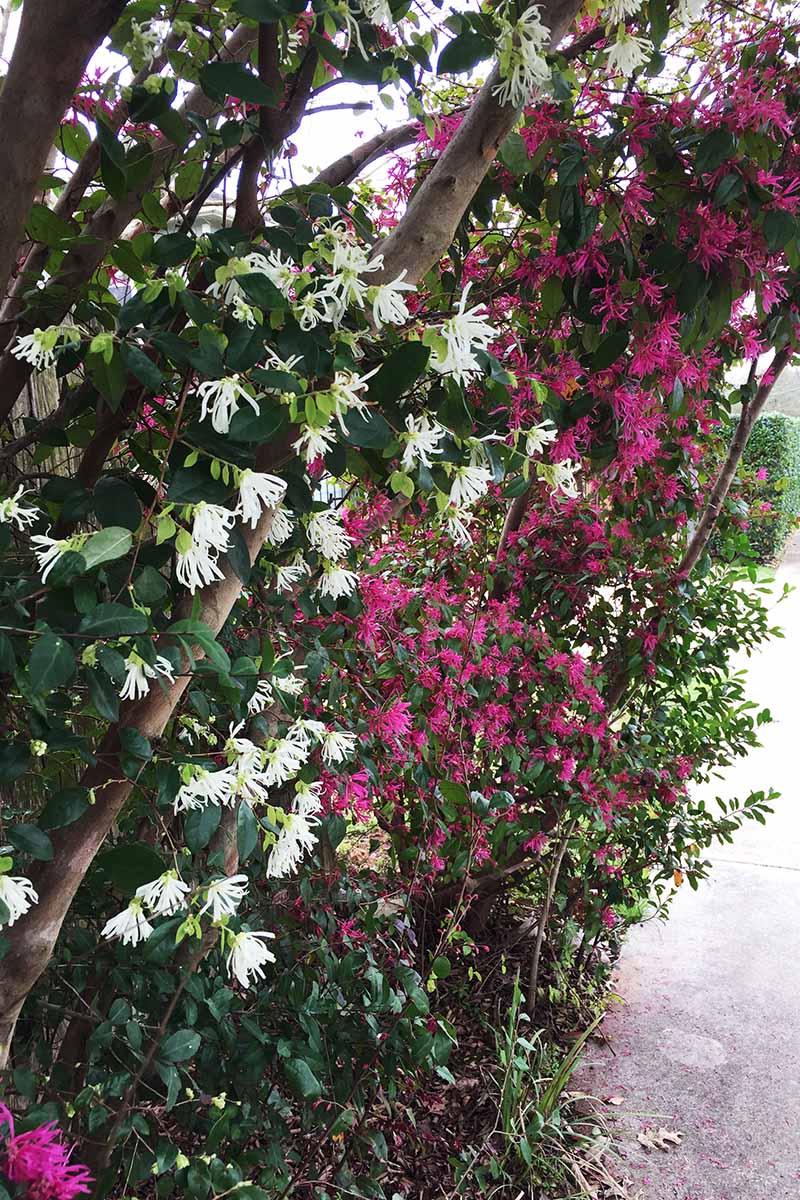
With a range of flower and foliage colors, sizes, and growth habits available, this versatile shrub is densely branching and makes a welcome addition to any style of garden or landscape.
Standard varieties have an upright profile with a mounding or spreading habit. These grow six to 15 feet tall with a spread of three to 12 feet, depending on the variety.
Dwarf cultivars have a tidy, mounding form and reach three to five feet tall with a similar spread.
The outward-facing flowers have a light, lilac-like scent with narrow, twisted petals measuring one to two inches. These come in a variety of red tones including magenta pink, pale pink, raspberry, and scarlet, as well as white.
A welcome sight in late winter to early spring, flowering typically occurs in March and April, but varies depending on locale. Some varieties rebloom lightly over summer as well, sporadically producing blooms on new growth.
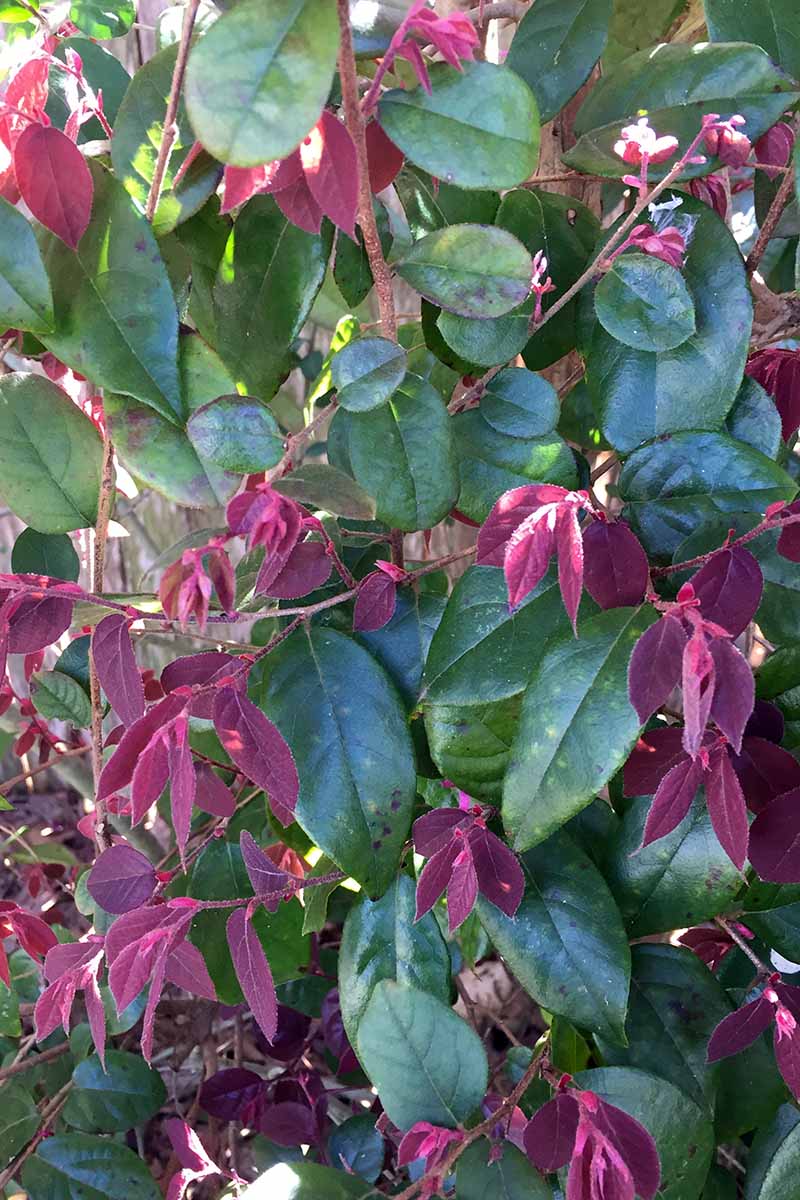
And the foliage is attractive too, with cultivars offering a rich palette of burgundy, chartreuse, cranberry, jade green, plum purple, and ruby leaves – often with two or three colors appearing on the same stem!
The thickly-branched and fast-growing shrubs are tolerant of pruning and sometimes shaped into attractive bonsai or topiary specimens.
Dwarf varieties have a compact size that makes them ideal for container growth.
L. chinense is hardy in USDA Zones 7 to 10 with some cultivars suitable for planting in Zone 11.
Cultivation and History
Chinese fringe flower, also known as Chinese witch hazel, loropetalum, and strap flower, is native to foothill areas of China and Japan growing along stream edges, thickets, and open woodlands.
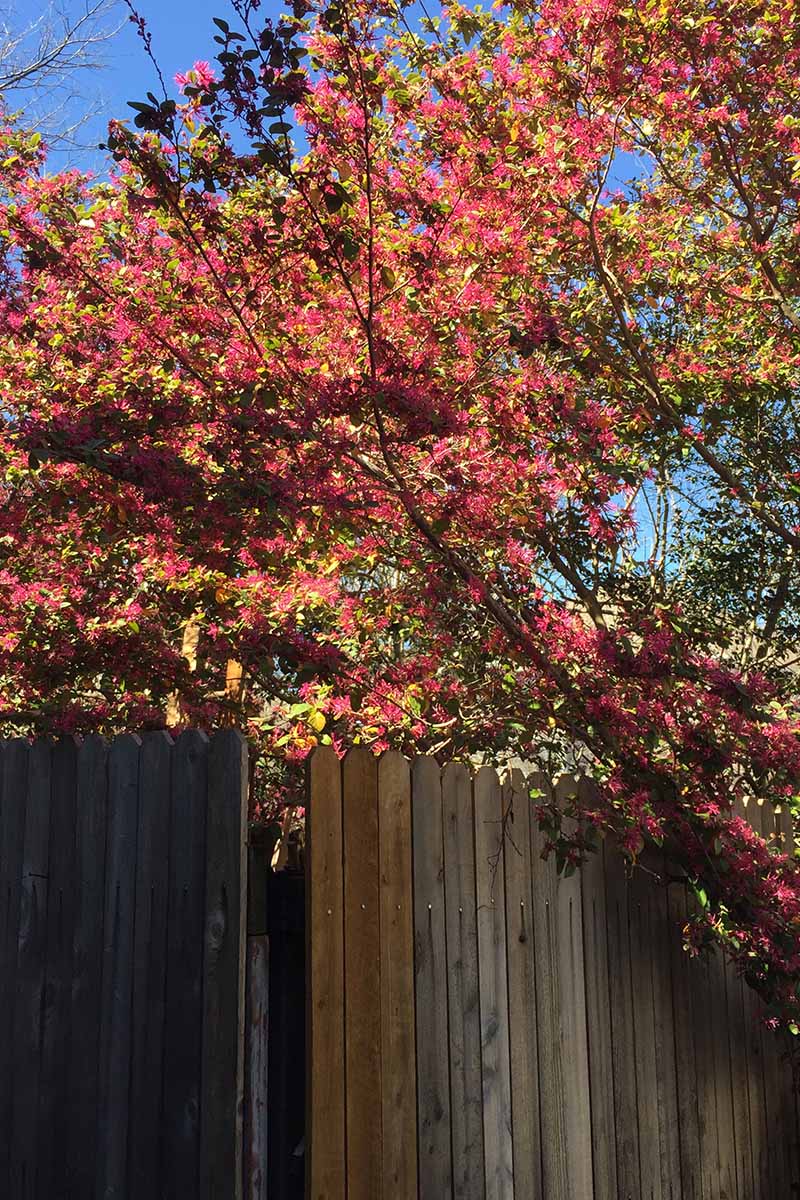
The genus name, Loropetalum, comes from a combination of two Greek words, loron and petalon, meaning strap and petal in describing the flowers.
The species epithet, chinense, means it comes from China.
A hardwood used for firewood in mountainous regions of southern China, the flowers, leaves, and roots of loropetalum are used in traditional Chinese medicine as well.
Species plants, with white flowers and green leaves, were introduced to the US in the 1880s, but were underused.
It wasn’t until 100 years later that loropetalum became popular after pink-flowered varieties with purple leaves were introduced in the 1980s.
Popular varieties may have the forma rubrum in their taxonomy, denoting their red or pink flowering form.
Grown for its colorful flowers and dense habit, Chinese fringe flower is commonly cultivated in cottage and courtyard gardens, as a border or informal hedge, and for screening.
Propagation
Propagating cultivars from seed is not recommended because seedlings won’t grow true to the parent, exhibiting variable characteristics.
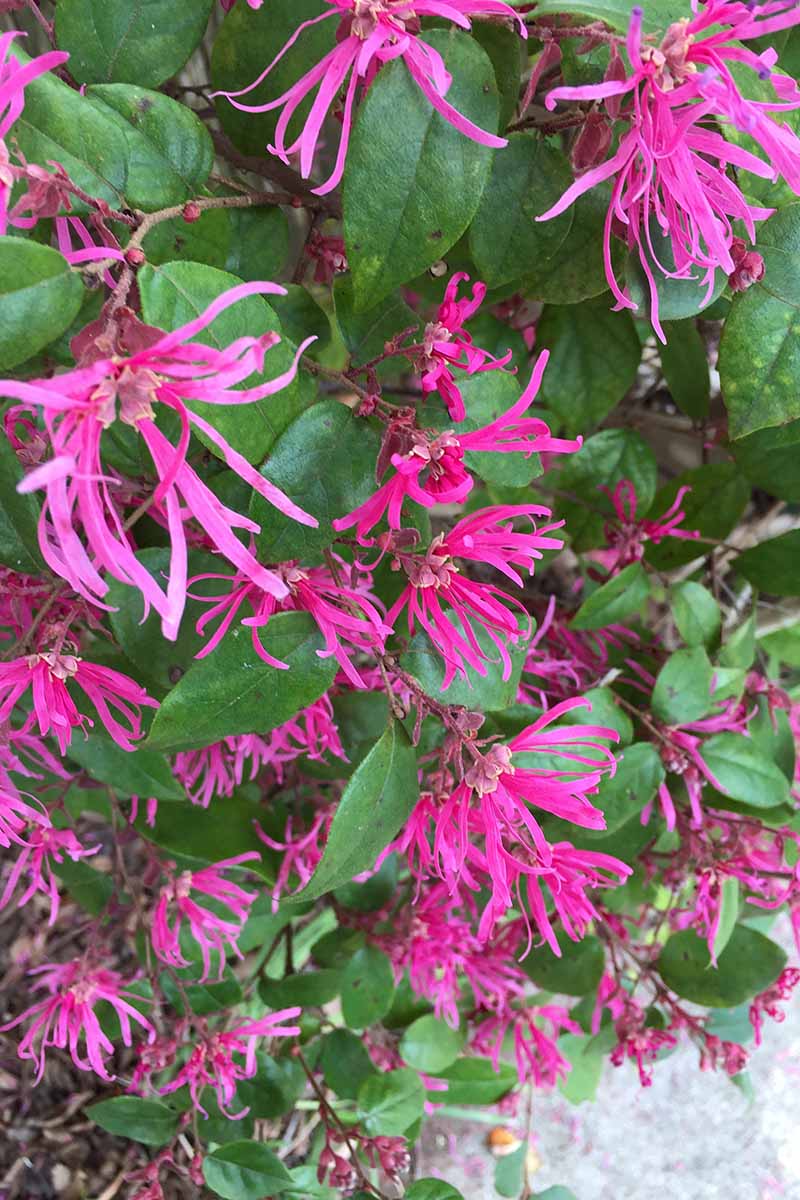
But plants can be successfully reproduced from softwood cuttings taken in mid-spring to midsummer, just as the softwood starts to harden – this allows the tender stems to firm up a bit before handling.
Take four- to six-inch cuttings of just ripening softwood and remove leaves from the bottom half of the stem.
Dip the stripped end into rooting hormone if desired.
You can find Bontone II Rooting Powder available at Arbico Organics.
Prepare a clean, six-inch container with drainage holes – I like to add a two-inch layer of coarse materials like broken pottery over the holes to aid with drainage.
Prepare a rooting mixture of equal parts grit, like landscape sand or perlite, with ground coconut coir or peat moss. Water slowly while stirring the soil to ensure all parts are thoroughly moistened.
Use a pencil or skewer to poke evenly spaced holes in the soil for the cuttings – create three holes for a six-inch pot.
Insert cuttings and gently firm the soil around the stems to prop them up.
Cover pots with a clear dome or plastic bag, ensuring the bag doesn’t touch the cuttings – a few chopsticks or bamboo skewers inserted into the soil will keep bags from collapsing onto the foliage.
Place containers in a protected location with bright, indirect light but out of direct sunshine.
Keep the soil lightly moist but not wet during the rooting process, which takes four to six weeks.
After rooting, remove covers and move pots into a location with morning or dappled sun.
Allow plants to grow in their rooting container until planting out in fall, or continue to cultivate in pots until the following spring.
How to Grow
Chinese fringe flower does well in fertile, well-draining soil with a variety of textures including loamy, sandy, or clay, and an acidic pH of 4.5 to 6.5.
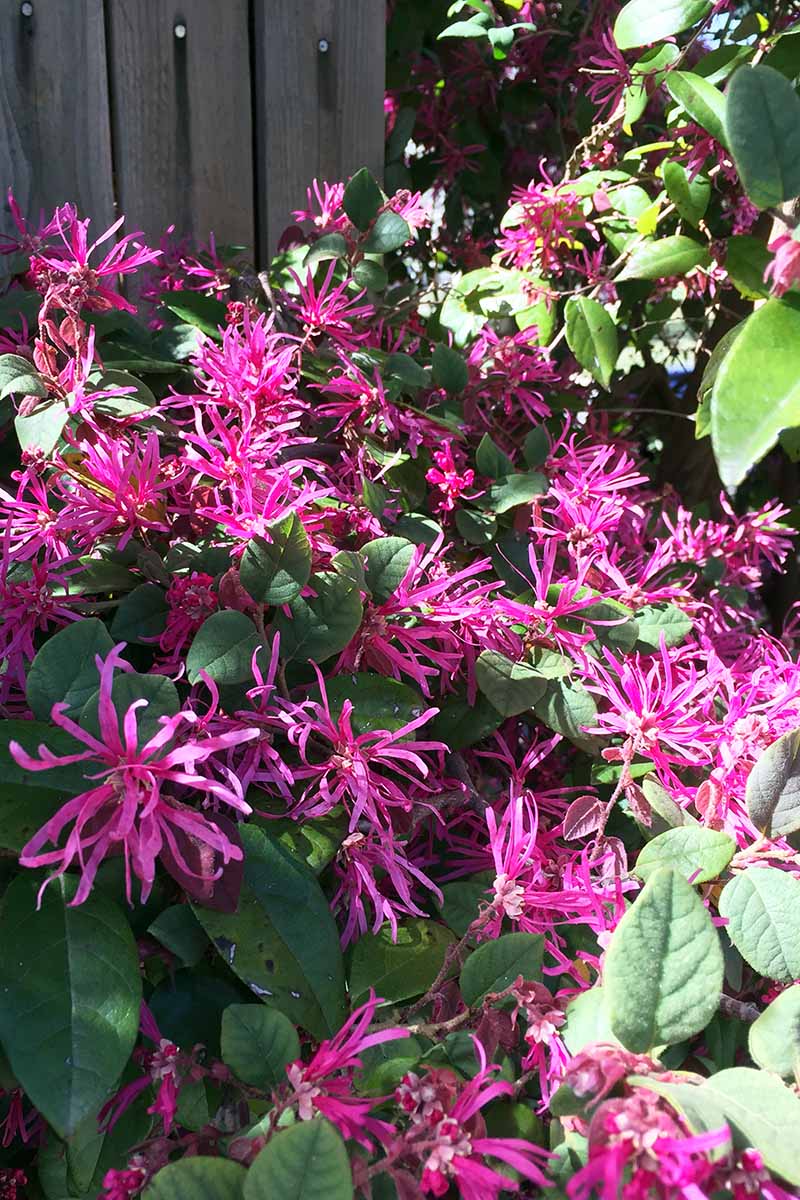
It grows in partial to full sun, with the most vibrant leaf colors in full sun – however, young plants might need light shade from intense afternoon sun.
Plant divisions or nursery stock in the cooler months of spring and fall.
Dig a hole twice the diameter and the same depth as the root ball.
To enrich the soil, amend with one to two parts compost or well-rotted manure to two to four parts garden soil.
Mix in one part grit to improve drainage if needed. Use materials such as landscape sand, pea gravel, or stone chips.
A “part” is simply a roughly equal measurement used for blending ingredients – it can be a spadeful or a wheelbarrowful, as long as each part is measured the same.
Right before planting, add in two or three tablespoons of bone meal for strong, healthy roots.
Remove plants from nursery or rooting containers. If rootbound, tease out circling roots with your fingertips.
Set the root ball in place so that the crown is even with or slightly above the soil line.
Backfill with soil and firm in place.
Space plants three to six feet apart, depending on the variety.
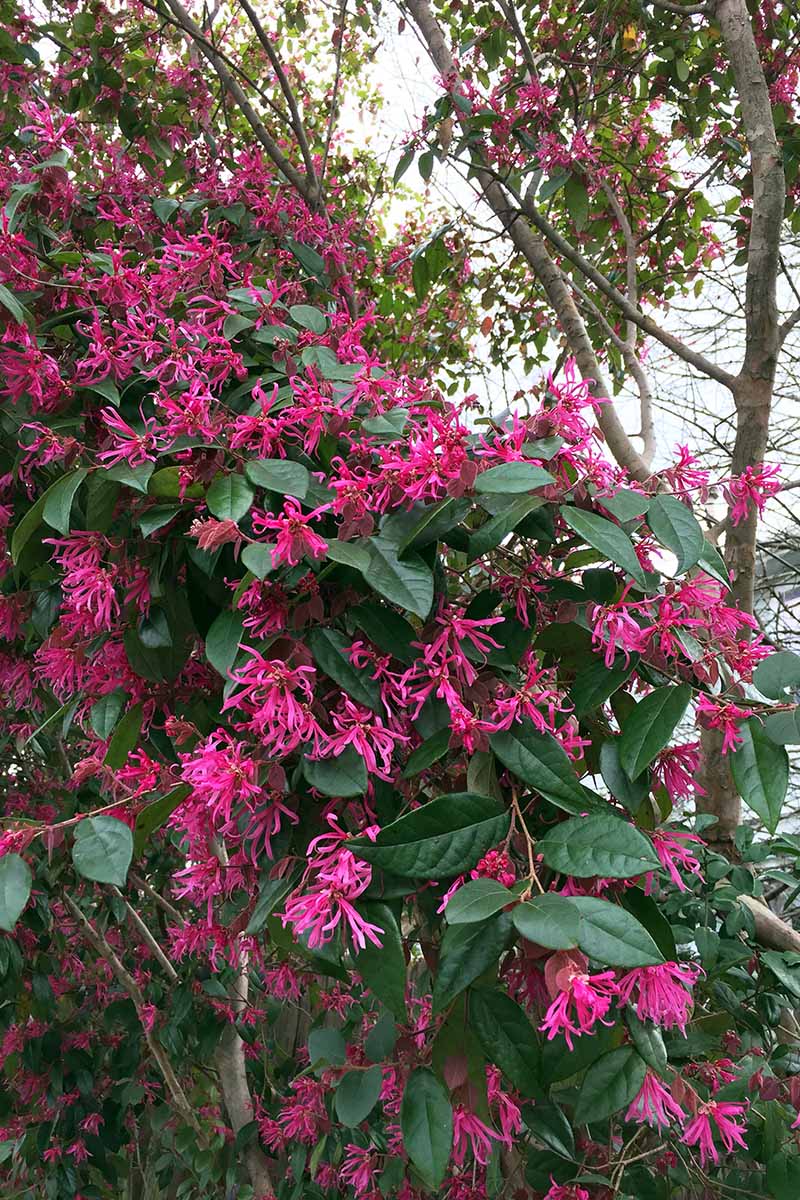
Water deeply, and continue to water once or twice per week until the roots are well established.
For container plants, choose planters and pots with drainage holes that are at least eight inches wider than the root ball.
Add a layer of loose drainage materials like broken pottery or pebbles to the base if desired.
Fill pots with an enriched, well-draining soil and mix in two tablespoons of bone meal.
Set plants in place with the crown slightly above the soil line. Backfill with soil and firm in place.
Water deeply, keeping the soil lightly moist until established.
Growing Tips
Easily cultivated, the following tips help to get the most from your Chinese fringe flower:
- For the most colorful foliage, plant in a location with full morning sun and light afternoon shade.
- All plant parts are used in traditional medicines and considered nontoxic for children or pets.
- Plants may develop chlorosis in alkaline soils, which causes yellowing of the leaves. To increase soil acidity, add aluminum sulfate before planting or as a side dressing.
- Before we get into pruning and maintenance, let’s have a look at some of the available options when selecting your plants.
Pruning and Maintenance
Left on their own, fringe flower shrubs have a free-flowing, graceful shape that’s hard to improve on.
But they’re also fast growing and can quickly overgrow their personal garden space.

Fortunately, they respond well to a regular light pruning to head back last year’s growth or to manage shape and size. And they also tolerate a hard pruning for use in formal hedges or topiaries.
The foliage is evergreen and attractive year-round, and many loropetalums are rebloomers with two flowering cycles.
The first cycle is an abundant flush of flowers on old wood in late winter or early spring. The second is a light or sporadic rebloom on new wood in summer and fall.
This makes spring the best time to prune, right after they’ve finished flowering, to give shrubs ample time to form new growth for reblooming in summer.
After the spring flowers fade, use clean, sharp shears to remove broken, dead, or weak branches.
To manage their size or shape, cut back stems by as much as one-third.
Shape hedges and topiaries at the same time, but don’t remove more than one-third of the overall growth at once. Instead, shape in spring after flowering then refine in fall with a lighter cut. Repeat the following year as needed.
Once established, Chinese fringe flower is a light feeder and requires little supplemental fertilizing.
If your shrubs look like they need a pick-me-up, fertilize in spring with a slow-release, granular fertilizer with a formula designed for acid-loving, broadleaf evergreens – like this 4-3-4 NPK Organic Azalea, Camellia, and Rhododendron Plant Food from Burpee.
Azalea, Camellia, and Rhododendron Plant Food
To help retain moisture and suppress weeds, add a two- to three-inch layer of mulch over the root zone, using organic materials such as bark mulch, straw, or aged wood chips.
Provide new plants with evenly moist, but not wet, soil.
Drought-tolerant once established, for the best performance in extreme heat or dry spells, water when the top three inches of soil is dry.
For container plants, allow the top two inches of soil to dry out between water applications.
Cultivars to Select
Cultivars are available in a range of sizes and growth habits. Here are some popular choices to get you started.
Ever Red
Eye-catching to the max, Ever Red® (‘Chang Nian Hong’) is a mid-sized shrub with prolific raspberry red flowers and deep burgundy foliage – a stunning combination for borders, containers, foundations, and accent plants.
Flowering from late winter through early spring, the spidery fringed flowers rebloom sporadically when planted in a spot where they’re happy.
These grow five to six feet wide with a similar spread. Hardy in Zones 7 to 9.
Containers of Ever Red® are available at Nature Hills Nursery.
Night Moves
A member of the popular Jazz Hands series, Night Moves® (‘Suzuki’) is an adorable mini plant with pristine white flowers and delectable, jade green to plum purple foliage.
Growing only two to four feet tall and wide, it’s an ideal choice when massed into low barriers, borders, and hedges or as a specimen in containers, foundations, and low-irrigation sites.
Hardy in Zones 7 to 10.
Plants are available at Nature Hills Nursery.
Purple Pixie
With a gorgeous weeping habit, richly-colored burgundy to puce foliage, and hot pink flowers, Purple Pixie® (‘Peack’) is an outstanding, compact choice for containers, ground covers, and slopes.
Flowering lightly and sporadically throughout the growing season, this unique spreading cultivar reaches a height of only one to two feet tall and width of up to five feet. Hardy in Zones 7 to 10.
Potted nursery stock is available at Nature Hills.
Ruby
‘Ruby’ is a beautiful mid-sized shrub with masses of richly colored, neon pink flowers and ruby to sangria foliage – a blazing gem for foundations, hedges, privacy screens, and topiary specimens.
Flowering in spring with a light rebloom in fall, ‘Ruby’ reaches a mature size of three to five feet tall and wide. Hardy in Zones 7 to 11.
Nursery stock in one- or three-gallon containers is available at Perfect Plants Nursery.
Zhuzhou
Upright and strongly branching, ‘Zhuzhou’ has a tall, commanding presence with dark, maroon to eggplant foliage and clusters of fuchsia pink flowers in early spring with light reblooming in fall.
One of the tallest loropetalum varieties, the shrubby trees grow up to 15 feet and spread six to eight feet, ideal as an accent or specimen or massed into tall hedges and privacy screens.
Hardy in Zones 7 to 10.
Shrubs in a variety of sizes are available at Perfect Plants Nursery.
Managing Pests and Disease
Loropetalum has few serious pest or disease problems, but there are a few issues to watch for.
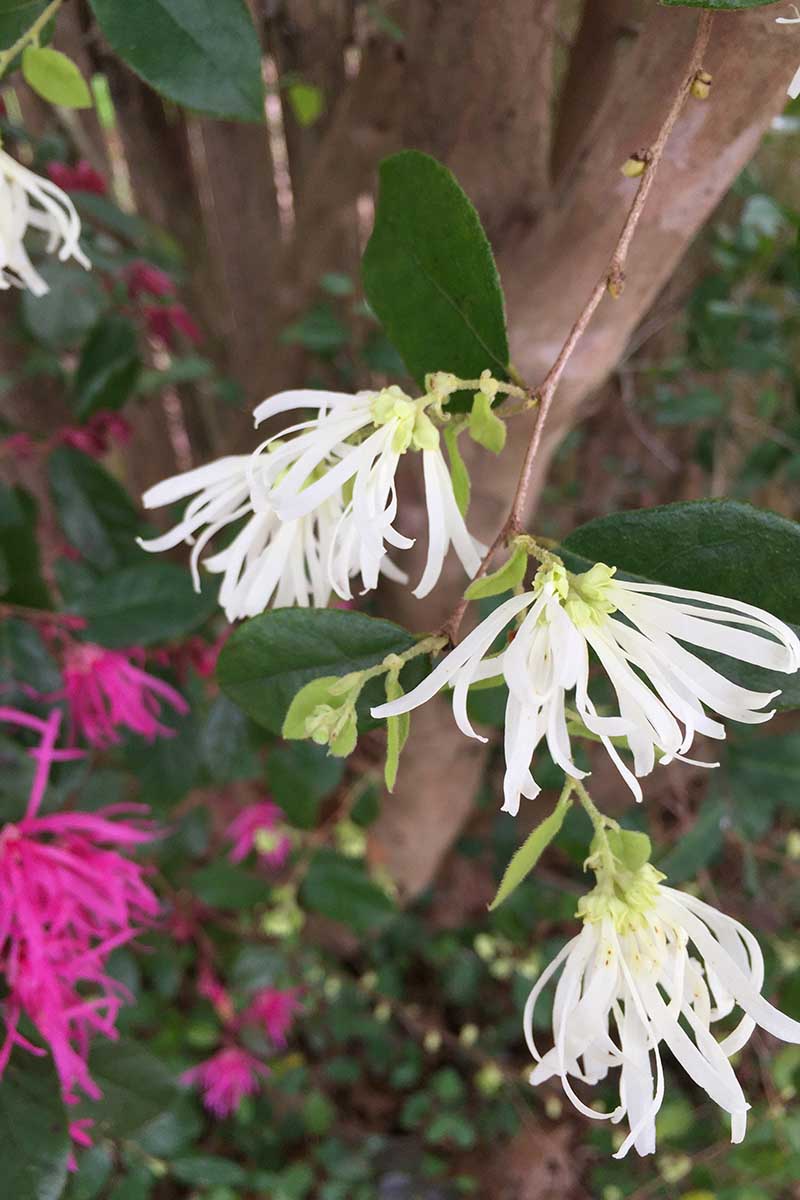
In very dry conditions, hard to see sapsucking spider mites can be a problem as they cause loss of vigor and small yellow or beige blotches that spread, drying out leaves.
For minor infestations, use a strong stream of water from the garden hose to dislodge mites, taking care to spray the underside of leaves.
An insecticidal soap can be used for problem infestations.
Root rot can be an issue, especially in poorly drained soils, causing plants to droop, wilt, or yellow. Prevention is the best cure for root rot so ensure your plants are set in well-draining soil.
Olive gall is a bacterial infection caused by Pseudomonas savastanoi that appears as dark, rough galls of varying sizes on shoots or stems, enlarging until the stem is encircled, which causes dieback.
Cut off infected branches several inches above the gall, and safely dispose of pruned materials. Disinfect your pruners in bleach before reusing them.
Best Uses
Chinese fringe flower is a highly versatile plant that can be used in containers, and as a ground cover, shrub, or tree.

Full-sized varieties give a stunning display that’s effective as a stand-alone specimen or background element in perennial beds, and they look superb when massed into hedges or privacy screens.
Ground cover types are highly effective as a slope stabilizer on banks, hills, or inclines. And dwarf varieties make a superb selection for low barriers and borders, or in containers and patio planters.
Quick Reference Growing Guide
| Plant Type: | Flowering perennial shrub | Flower/Foliage Color: | Bubblegum pink, fuchsia, hot pink, raspberry/emerald green, burgundy, maroon, plum |
| Native to: | Central Asia (parts of Mongolia and Siberia) | Water Needs: | Low |
| Hardiness (USDA Zones): | 7-10, with some suitable for Zone 11 | Maintenance: | Low |
| Bloom Time/Season: | Late winter/early spring | Tolerance: | Deer, drought |
| Exposure: | Full to partial sun | Soil Type: | Fertile with loamy, sandy, or clay textures |
| Time to Maturity: | 3 years | Soil pH: | 4.5-6.5 |
| Spacing: | 3-6 feet | Soil Drainage: | Well-draining |
| Planting Depth: | Crown at or just above soil level (transplants) | Attracts: | Bees, butterflies |
| Height: | Up to 15 feet, depending on variety | Uses: | Accents, barriers, borders, containers, ground covers, hedges, privacy screens, topiary |
| Spread: | Up to 12 feet, depending on variety | Family: | Hamamelidaceae |
| Growth Rate: | Fast | Genus: | Loropetalum |
| Common Pests and Diseases: | Spider mites; olive gall, root rot | Species: | Chinense |
Dazzling Displays
Easy to care for and easy on the eye, this fast-growing shrub/tree is a gorgeous addition to many gardens.
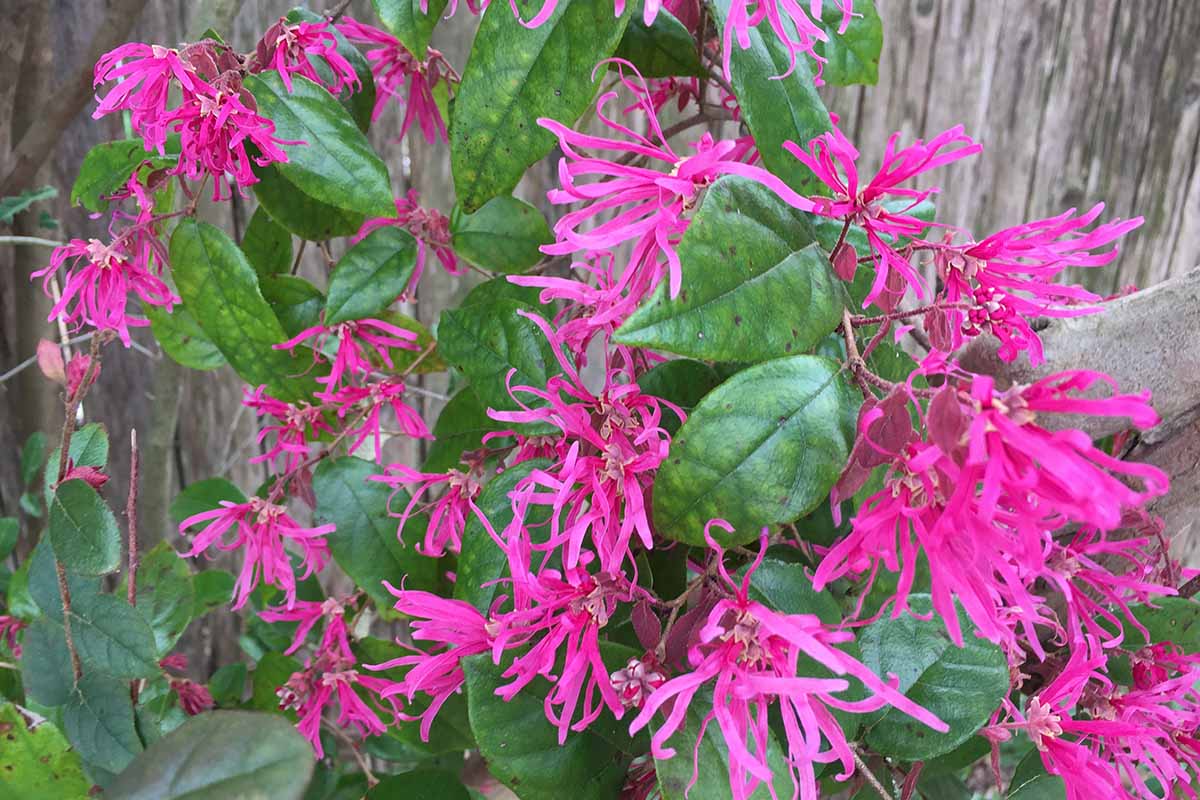
Be sure to give new plants regular water, feed in spring if needed, and prune after flowering for a dazzling spring display of shimmering pink flowers and beautiful burgundy foliage!
How many of you folks have this pink beauty in your landscape? Tell us about your favorite varieties in the comments section below.
And to learn more about drought-resistant landscape shrubs, check out some of our other guides:

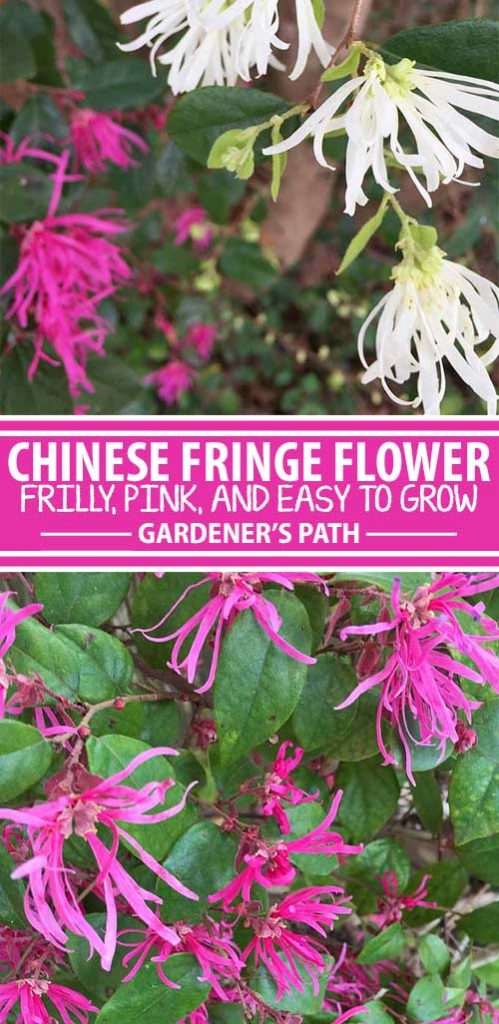


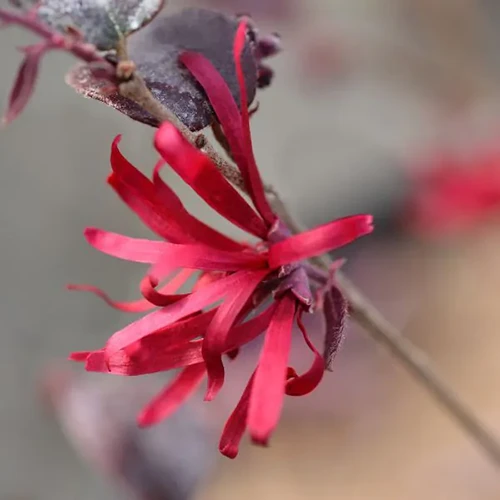
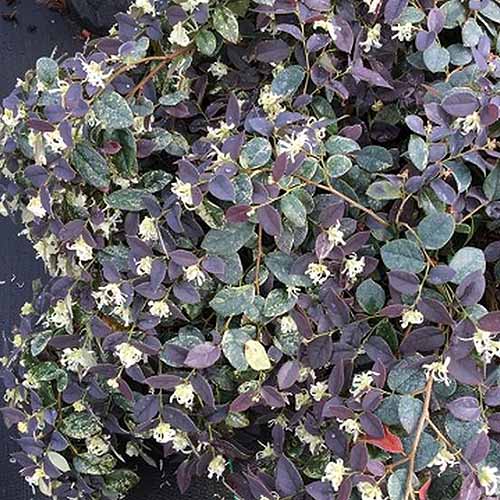

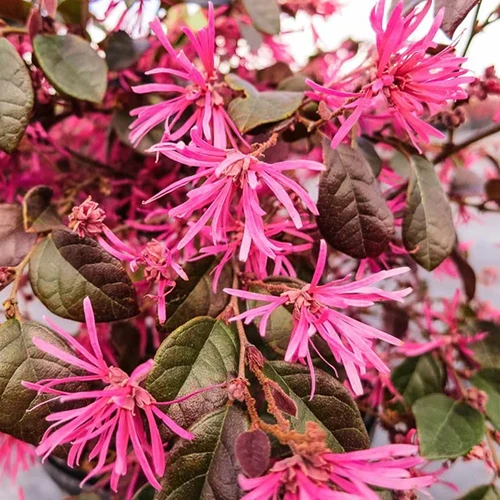
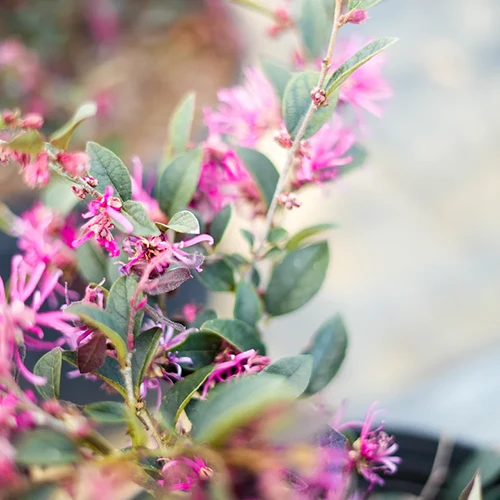
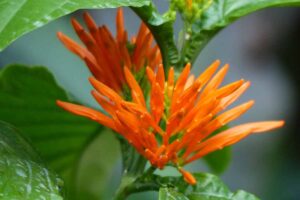
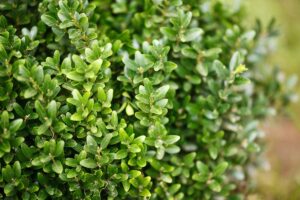

I purchased one 15 years ago and was assured it was a dwarf. Ha! I have cut it to ground level and it keeps coming back. How big is root system. Could it be transplanted?
I plan to make cuttings to eventually plant along my rear fence.
LOL. Funny about the sizing issue! You should be able to transplant it without any issues. You might trim it back quite a bit before you do so it doesn’t get stressed in its new home, trying to supply nutrients to a giant plant.
I live in a northeast suburb of Greater Detroit MI, having moved here 1.5 years ago. I think we have an older Chinese Fringe Flower tree growing here, facing NE, but it always drops its leaves in the fall. It is in full bloom right now (June 4, 2019). We are zone 6.
Beautiful! Interesting that yours drops its leaves. I guess being further north, that would be the case. Mine are all pink, but once in a while a random white flower pops out. Must be grafted or have a recessive gene in there somewhere!
I wonder if you have white fringetree, /Chionanthus virginicus/. https://plants.sc.egov.usda.gov/core/profile?symbol=CHION
Ah! Good observation, Henry! Could be so.
My (variegated) Fringe-Flowers are now just green — no other color. Does that mean they’re not getting enough sun? I live in South Carolina.
Hi Kathy! That indeed could be what’s happening. Plants whose leaves are supposed to be variegated… if they don’t get enough light, they’ll respond by producing all-green leaves in order to be able to make sufficient chlorophyll.
I love the half tunnel! I have discovered after moving into a new house a tiny one of these in one of the beds. I’m thinking of transplanting into a pot so I can enjoy it closer to the house. Do you think it might reach the maximum size of 1.5 m if given a large enough pot? I’d love to try making it curve with a similar effect next to an arched courtyard entry….
Thanks for your kind words. We love the tunnel, too. Perhaps, if you give it a large enough pot, it will get tall.
I have a lovely “ruby” fringe flower in my garden in Sacramento, CA, where it gets cold and hot, and it does very well. Many gardeners have these around here and they are truly beautiful.
Oh, interesting, Frances. I didn’t know they would grow in Sacramento. I’m so excited…mine are just getting ready to bloom!
What happens when they’re overwatered? We got a little one (from a nursery in Pflugerville a month or so ago) to bonsai, and my husband waters it everyday and it’s turned brown and crunchy. And can we prune the brown parts?
Unfortunately it’s easy to kill our plants with too much attentive care! Since you mentioned bonsai, I assume this plant is growing in a container? Does the container have drainage holes, and soil that drains easily? Are you growing it indoors, or outside? Though frequent watering is tempting and container-grown plants can dry out more quickly than those grown in the ground, particularly if they’re growing outdoors in Texas or another location with a hot climate, I hope you’ll be able to get your husband to hold back a bit. Rather than watering every day, or even on a regular… Read more »
I live in the Central Valley California, we have a row of these growing on the north side of our driveway. They are huge, probrably 12-25 feet tall and mostly branches on the bottom with lots of leaves and flowers on top but I’d like to prune them severely down and maybe have more of a bonsai look, so do you think that’s possible at this point or will I kill them if I do this?
It sounds like your plants have begun to take on more of a tree form, based on your description. Unfortunately at this point, you’re going to have some difficulty turning them back into “bonsai-like” shrubs! Pruning back more than 1/3 of any shrub is generally not recommended, and for larger plants, this is often reduced to 1/4. Wait to prune until after they have finished flowering, and cut them back to remove dead growth, reduce their overall size, and maintain their shape. Keep in mind that these plants tend to regrow pretty quickly. If you really can’t stand their size,… Read more »
Hello. I have a “fringie” that is about 5 yrs and 5 ft! You discussed transplanting it. So… cut it back 1/3rd after growing season? We are in TN and it blooms randomly, even in winters, which are short but cold. How much of a root system are we looking at and how much of it can one afford to lose? We have mostly clay soils. Will try cuttings in case we lose the main plant. Thanks, and love the arbor look!
Thank you Gretchen for the information about loropetalum. I’m in Brisbane, Queensland, Australia and I have just bought this plant. I’d never heard of it before the lady in the nursery suggested I try growing it.
I hope to send you a picture of it when it becomes established.
Roberta